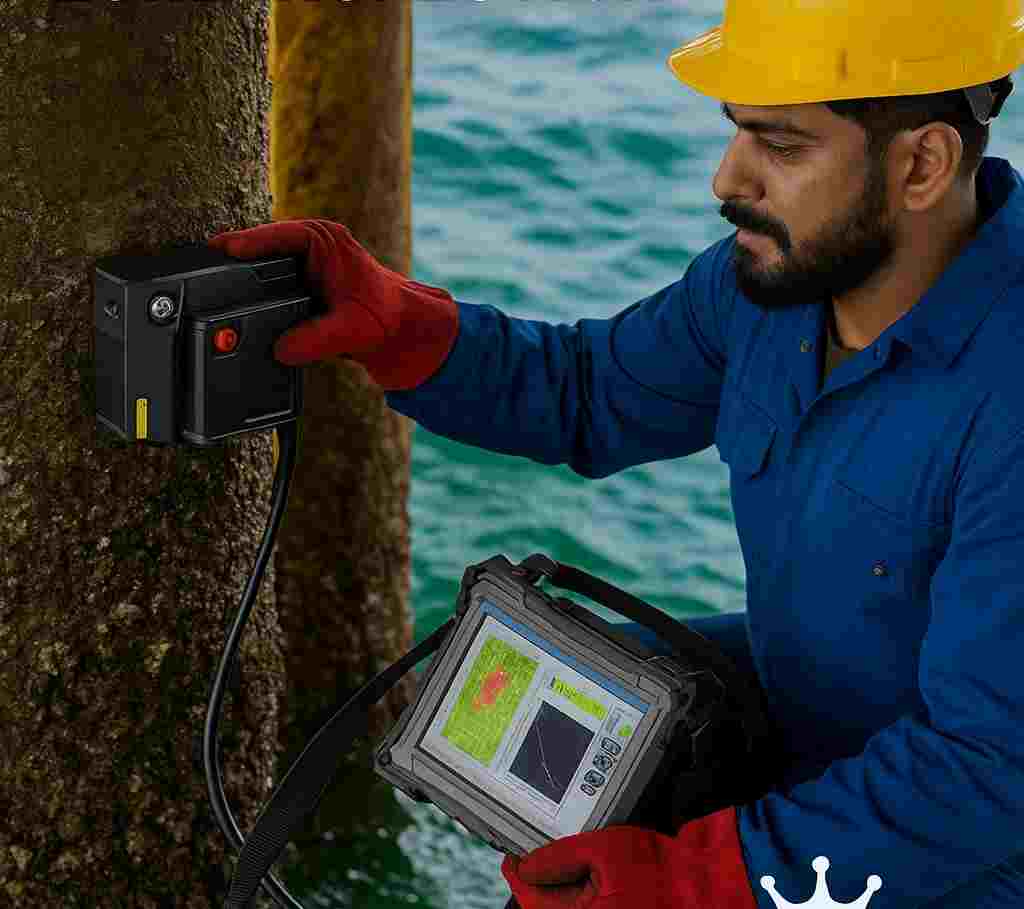
Pulse Eddy Current Array (PECA) is an advanced electromagnetic technique derived from Pulse Eddy Current (PEC), offering significantly faster coverage, improved resolution, and enhanced imaging for corrosion detection through insulation, coatings, and fireproofing.
By integrating multiple PEC sensors into an array configuration, PECA allows simultaneous data acquisition over a broader area, enabling high-speed scanning and corrosion mapping of large surfaces with minimal disruption.
How PECA Technology Works?
PECA operates on the same electromagnetic induction principle as conventional PEC. It generates short-duration pulses to induce eddy currents in conductive materials (typically carbon steel). These eddy currents decay based on wall thickness, and the decay rate is measured by sensors.
Unlike PEC, which uses a single probe, PECA deploys multiple sensors (in linear or matrix arrays) to capture data from several adjacent points simultaneously. This parallel scanning approach enables the generation of corrosion maps with improved spatial resolution and inspection speed.
Where PECA Is Applied?
PECA is ideal for applications where speed, resolution, and coverage are critical, especially in large-scale, insulated, or coated structures. Typical applications include:
Corrosion Under Insulation (CUI)
Storage Tank Shells and Floors
Pipe Racks and Vessels
Risers and Splash Zones
Offshore Wind Tower Base Plates
Fireproofed Structures
Large-Diameter Pipelines
Boiler Tubes and Heat Exchangers
Advantages of PECA over PEC
Feature PEC PECA
Inspection Coverage Point-by-point Area-wide (multi-sensor)
Inspection Speed: Moderate Fast
Imaging Output 1D data per point, 2D corrosion mapping
Resolution Standard High
Operator Efficiency Medium High
Suitability for Robotics Limited: Excellent
Top Advantages of PECA:
High-Resolution Corrosion Mapping
Fast Coverage of Large Surfaces
Visual Thickness Mapping (2D & 3D)
Maintains all PEC Benefits (non-intrusive, insulation-friendly)
Ideal for Automation & Robotic Deployment
PECA in Action: Real-World Scenarios
Tank Inspection: PECA can scan tank shells or floors rapidly from the exterior, producing corrosion heat maps.
CUI Screening: Over long insulated pipe runs, PECA quickly identifies hotspots requiring follow-up.
Offshore Applications: PECA reduces the time and risk of rope access or diver-based inspections by enabling fast robotic scanning.
Future of PECA Technology
PECA is at the forefront of non-intrusive corrosion detection, and its evolution includes:
AI & Machine Learning for automated defect classification
Lighter, more compact arrays for field flexibility
Integration with drones, ROVs, and crawlers
Cloud-enabled corrosion mapping & reporting
The future of asset integrity lies in data-rich, high-efficiency inspection, and PECA is a cornerstone of that transformation.
Pulse Eddy Current Array (PECA) is the next step in electromagnetic corrosion assessment, combining the best of PEC with the speed and clarity of imaging. It empowers industries to manage aging assets, comply with regulations, and prevent costly failures — without removing insulation or halting operations.
For industries looking to adopt data-driven, non-intrusive inspection, PECA is a smart, scalable, and forward-looking solution.

